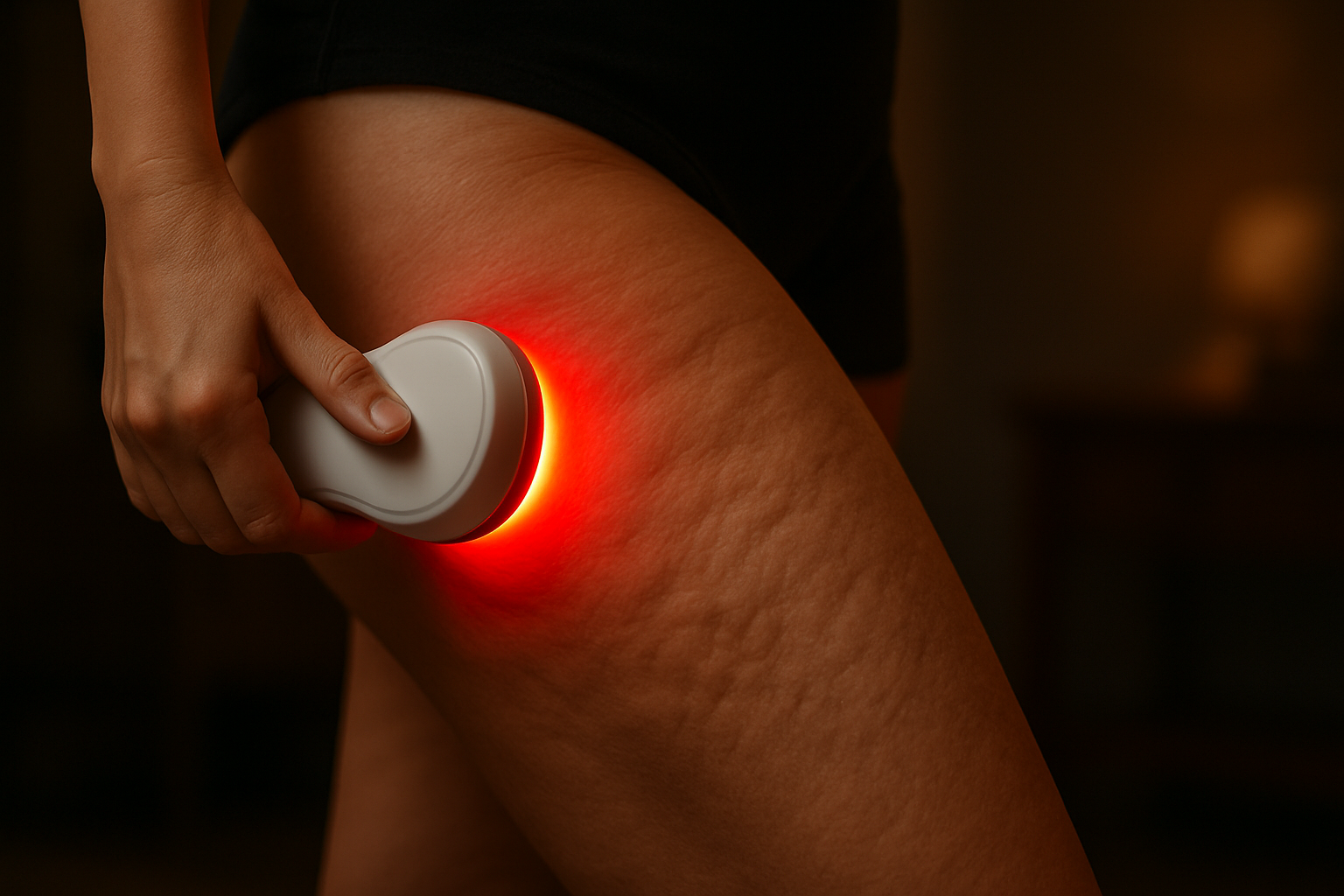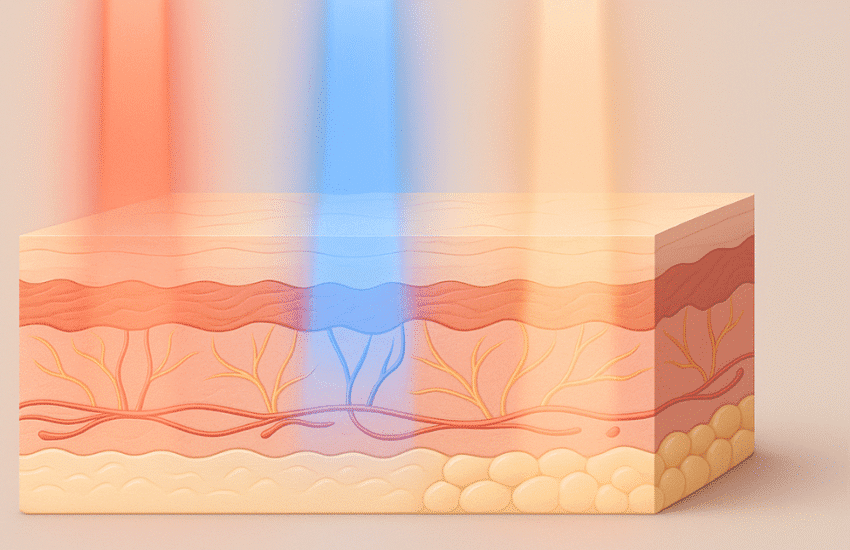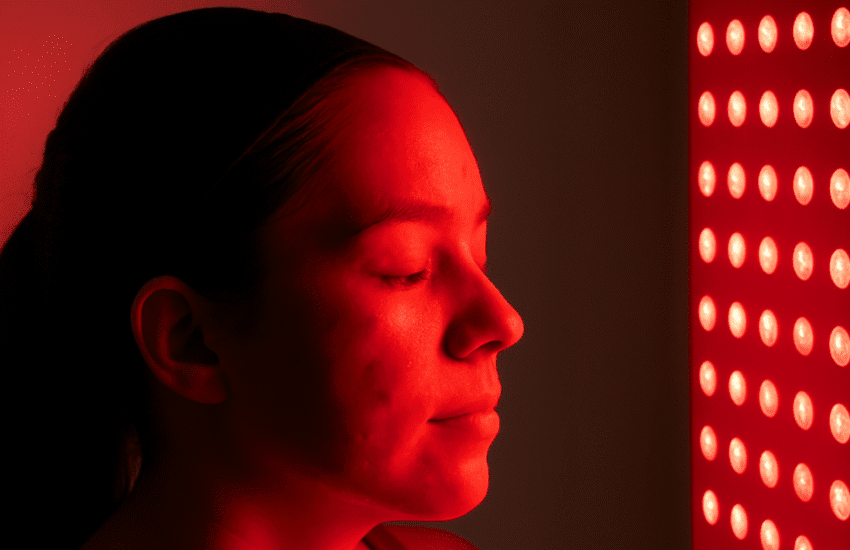Does Red Light Help with Cellulite? What the Science Says
Cellulite affects close to 90 percent of women, and red light therapy is now being touted as a gentler way to soften those tell-tale dimples. By bathing skin in precise wavelengths, RLT can boost circulation, encourage new collagen, and nudge fat cells’ metabolism—all changes that may help smooth the classic “orange-peel” texture over time.
For at-home use on thighs and glutes, a red light leg wrap or body belt such as LifePro’s Red Light Therapy Belt covers more skin and keeps sessions hands-free. If you’re weighing options, see our guide to the best red light leg wraps for coverage, wavelengths, and fit.
Or read on to learn what current research actually shows, how treatments are done in clinics vs at home, and the kind of results you can realistically expect.
Disclosure: This article is reader-supported. As an Amazon Associate we may earn a small commission on qualifying purchases at no extra cost to you.
The Science Behind Cellulite Formation: How Does Red Light Help with Cellulite?
Those dimples that seem impossible to smooth out have a scientific explanation. Cellulite forms when fat deposits push through the connective tissue beneath your skin, creating that characteristic orange-peel texture.
Women’s connective tissue runs vertically, which makes it easier for fat to push through and create dimples. Men’s tissue crisscrosses, providing more support. That’s why 80-90% of women experience cellulite at some point, regardless of their body weight or fitness level.
Your hormones play a huge role here. Estrogen influences where your body stores fat and can affect circulation in cellulite-prone areas. When blood flow slows down, the skin gets less oxygen and nutrients, making those dimples more noticeable.
Genetics matter too. If cellulite runs in your family, you’re more likely to develop it. The most common trouble spots include thighs, buttocks, and abdomen – areas where women naturally store more fat cells.
What Research Says About Red Light Therapy for Cellulite Reduction
Clinical studies on red light cellulite treatments show promising but modest results. A 2011 study in the Journal of Cosmetic and Laser Therapy found participants experienced visible improvements when using combined red and near-infrared light wavelengths alongside treadmill training.
The research makes one thing clear: consistency matters. Most studies show you need regular photobiomodulation cellulite sessions over 8-12 weeks to see noticeable changes. Skip your maintenance treatments, and those improvements tend to fade away.
Red light therapy success rates vary significantly between individuals. Some people see dramatic before and after red light cellulite results, while others notice more subtle changes in skin texture and firmness. Most dermatologist recommendations suggest using it as part of a comprehensive approach rather than expecting miraculous overnight transformation.
How Does Red Light Therapy Help Reduce Cellulite Appearance?
Think of infrared light treatment for cellulite as a gentle wake-up call for your skin cells. The therapy increases blood flow to treated areas, delivering more oxygen and nutrients exactly where you need them. This circulation improvement helps reduce the appearance of dimpled skin over time.
Red light stimulates fibroblasts – your body’s collagen-making factories. More collagen production means stronger connective tissue that can better hold fat cells in place. It’s similar to reinforcing the foundation of a house to prevent settling and cracks.
The optimal wavelength for cellulite combines red light (630-660nm) with near-infrared (810-850nm). These wavelengths penetrate different skin depths, working together to support lymphatic drainage and reduce fluid retention that can make cellulite look worse.
What to Expect: Red Light Therapy Duration for Cellulite Treatment
Professional red light cellulite treatments typically recommend 2-3 sessions weekly for 4-12 weeks. Each session lasts about 20-30 minutes per area – perfect timing to catch up on your favorite podcast or meditation app.
Progress happens gradually. Most people start noticing subtle skin tightening and texture improvement after 4-6 weeks of consistent use. The changes sneak up on you, similar to how muscle tone improves with regular exercise.
At-home red light therapy devices offer convenience but deliver less power than professional equipment. Medical spa treatments cost $50-150 per session, while home devices range from $200-600+. The DIY approach allows more frequent treatments, which can be especially helpful for stubborn cellulite treatment.
Does Red Light Therapy Combined with Other Treatments Help Cellulite More?
LED light therapy for cellulite works best as part of a team effort. Pairing sessions with strength training helps reduce underlying fat while toning muscles in thigh cellulite and buttock areas. The light works from the outside while exercise transforms from within.
Many users enhance their results by dry brushing before red light sessions. This simple technique boosts circulation even more, creating a powerful combination for cellulite dimples improvement. Some add caffeine scrubs between treatments to further stimulate blood flow.
Consider incorporating retinol products on non-treatment days. These vitamin A derivatives support collagen production between your photobiomodulation sessions. Staying well-hydrated throughout this process helps maintain skin elasticity and supports overall results.
Conclusion
Red light therapy for cellulite reduction offers a promising non-invasive option that works best when combined with healthy lifestyle choices. While research shows modest improvements with consistent use, remember that individual results vary significantly.
Start with realistic expectations if you’re considering this approach. Most effective cellulite treatments require ongoing commitment and red light therapy is no exception. Maintenance sessions help preserve any improvements you achieve.
If you want a hands-free option for thighs and glutes, consider a wrap such as the LifePro Red Light Therapy Belt, it’s designed to cover more skin in one session for easier consistency.
Cellulite affects nearly all women regardless of size or fitness level. While red light wavelengths for cellulite may help improve its appearance, embracing a comprehensive approach that includes exercise, proper hydration, and complementary treatments yields the best long-term results. Consult with a healthcare professional to determine if this treatment aligns with your specific needs and goals.
Health Disclaimer
The information in this article is for educational purposes only and is not a substitute for professional medical advice. Always consult a qualified healthcare provider before starting any new treatment.


